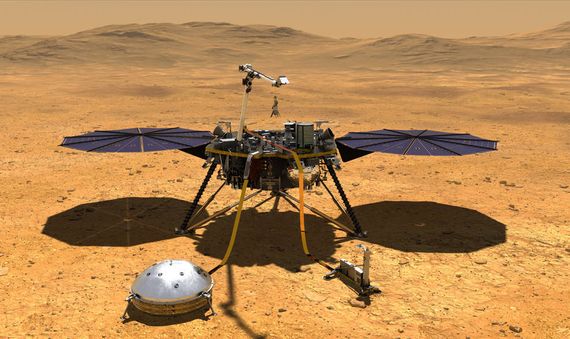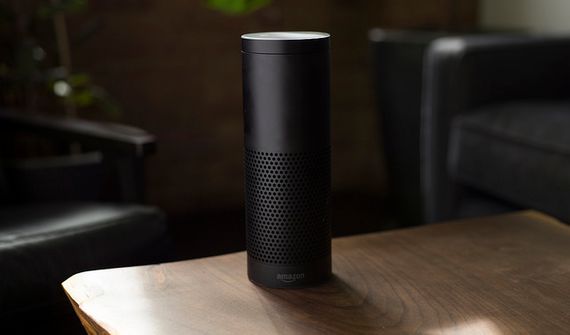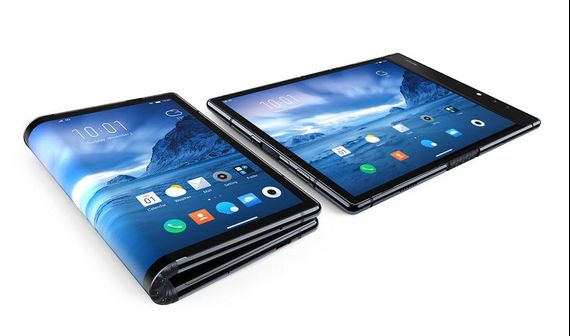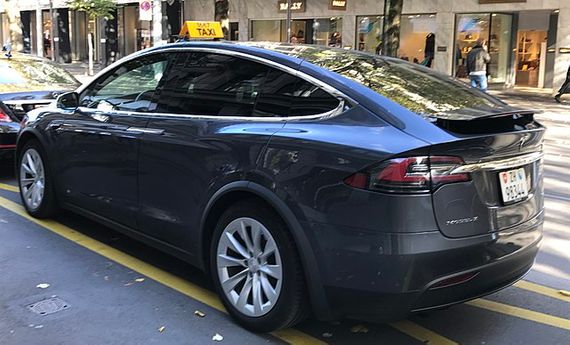If 2017 was the year of smartphones, the year in which artificial intelligence began to learn on its own how to become invincible, then the legacy that 2018 will leave behind is the stumbling blocks—both commercial and know-how—that these technologies have yet to overcome. With robots that stop working during their premiere and fatal accidents involving self-driving cars, but also a robotic lander that is studying the inner workings of Mars and the increasingly powerful virtual assistants, we review the best and worst of technology of 2018.
THE BEST
The InSight probe
On November 26, the NASA InSight probe landed on Mars with the mission to explore the heart of the red planet. The spacecraft has deposited a seismograph on the Martian surface to capture earthquakes or the impact of meteorites. Its instruments will also measure how much heat escapes from the centre of the planet and analyse its rotation to better understand its internal composition.

In addition to being a kind of rehearsal for the international arrival to Mars—the United States, China and the European Union all intend to send unmanned vehicles to the red planet in 2020—the InSight mission will provide new data to understand why that planet and ours are so different, despite having been formed at the same time and from similar materials. “This mission will allow us to understand what the essential elements are for a planet to be habitable and what the probability is that life exists in other parts of the universe,” NASA said in a statement.
The virtual assistants
After jumping from mobile devices to our homes—with Siri from Apple, Alexa from Amazon, Cortana from Microsoft and Google Assistant—virtual assistants with voice recognition technology are set to take over all possible gadgets.
After being crushed last year by the release of Alexa at the CES (Consumer Electronics Show), the largest technology fair in the world, Google responded this year with the integration of its voice assistant into all imaginable devices, from speakers with or without screens to television sets and even Kia cars.

For her part, Alexa has found her way into Toyota vehicles and Vuzix smart glasses. The fight between the technology giants indicates that voice assistants will play an increasing role in the digital life of users. The executives of both companies already talk about taking this technology to many more places, such as hearing aids, office meeting rooms and even the bathroom (Amazon is studying a collaboration with Kohler brand smart toilets).
“If voice is going to be everywhere, you want to see voice transition from the home, when you get into your car… You’d also want it at work. We’re going off into auto and these other places because we believe voice is a natural interface and it should be ambient,” said Steve Rabuchin, vice president of Amazon’s Alexa Voice Service, at CES 2018. It seems that the battle of the digital assistants has barely begun.
THE WORST
CLOi, the LG robot
The company LG had announced that in 2018 it would add artificial intelligence to all its devices. It was assumed that CLOi, a small domestic robot, would demonstrate how the company’s new artificial intelligence software ThinQ could work perfectly with appliances and improve cooking activities—it’s able to read recipes and cooking instructions and control the temperature of the oven, for example. Before its premiere at CES 2018, the company’s marketing team described it as “the ultimate in simplicity when managing your smart home.”
On that occasion David VanderWaal, vice president of marketing of the company, sent a recipe to CLOi through an application on his smartphone and asked: “What recipe could I make with chicken?” The answer was silence. The executive repeated the question up to three times, but the robot didn’t react, to the uncomfortable laughter of the audience. The company decided to continue with the script of the presentation, but the damage was already done. After the technology fair, there was no talk of CLOi again.
Smartphones in general
If mobile applications are transferred to cars, televisions, refrigerators and other devices, industry news no longer revolves around smartphones, but rather adjacent technologies such as the 5G connection or the Internet of Things. This was made clear by the organisers of the last Mobile World Congress, where the main presentations had more to do with social robotics, industry 4.0 and virtual assistants.
This doesn’t mean, however, that manufacturers have stopped pursuing the next success: going beyond Samsung’s Galaxy S9 and the new iPhone, Chinese companies are taking risks with innovative ideas, for example by moving forward with two screens (like the Find X from OPPO) or folding screens. The daring Royole Corporation got the jump on Amazon and Huawei and in November launched the FlexPai, a prototype smartphone with a folding touch screen. The problem is that the interface of the device is confusing, since there is no continuity between the two screens.

Users have also experienced problems with the Google Pixel 3, an expensive model (starting from 849 euros) whose memory doesn’t allow many photos to be saved and whose battery doesn’t last long. This is probably due to the fact that the Android system consumes a lot of resources and the device is only equipped with 4GB of RAM, while competing models have 6 to 8GB of RAM.
The highlight of the year was the Mate 20 Pro from Huawei, with a more powerful processor than Samsung and Apple and a more intelligent triple camera, in addition to nanoSD memory and reverse load (can be used to charge other devices).
Self-driving cars
A field in which the risks and problems are still greater than the promises is that of self-driving cars. Experimental driverless vehicles, such as Google’s Waymo in the United States, have been involved in numerous accidents in the past year. Last May, and just one month after tests began, one of these self-driving cars was completely destroyed after colliding with another vehicle.

For its part, the company Uber was forced by the government of Arizona to shut down its self-driving car program after a 49-year-old woman died when she was run over by one of the company’s driverless vehicles.
Also Tesla, Inc. had to deal with a series of collisions due to the autopilot function of its models. The most serious accident, last March, took the life of the driver of a Model X.
Comments on this publication